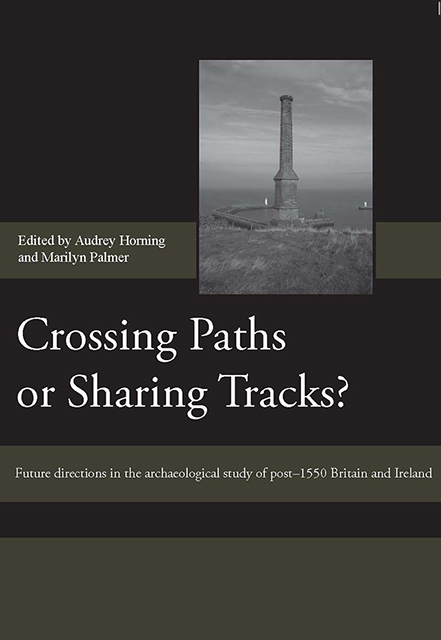 Crossing Paths or Sharing Tracks?
Crossing Paths or Sharing Tracks? Published online by Cambridge University Press: 07 March 2023
The nine chapters in this section all reflect, in one way or another, upon the relationship between ‘people and things’. Moving beyond a simple dichotomous relationship between the two, wherein we somehow have to prioritise the agency and importance of one over the other, each of these chapters provides us with a statement on the current practice of archaeology (be it defined as industrial, post-medieval, historical, contemporary, avocational, academic or commercial). Each author employs a variety of case studies not only to illustrate the range of contemporary practice, but to ground thoughtful suggestions about the future. Following on from Chris Dalglish's call for more engaged interdisciplinary research in chapter 18, the final contribution in Section Two, many of the chapters in this section also engage withthe need for increased discourse between specialists and scholars, withthe concluding chapter by Steve Mrozowski defining this aim as the most important goal for the future development and enhancement of the study of the archaeology of the past five hundred years.
In chapter 19, Roger Holden opens the section with a concise argument in favour of the continued incorporation of technological and engineering insights in the interpretation of industrial archaeology. Just as Nevell (this volume) acknowledged his greater interest in social approaches to industrial archaeology, Holden freely admits that he personally is ‘more interested in the movement of cogs than the passage of clogs’. Taking ‘power’ as his theme, he first examines the engineering principles behind the increasing speeds, and thus energy, used in 19th-century mills, and then considers the physical size of power plants. Holden reminds us that ‘understanding the technology is essential to understanding the work the workforce has to do’, noting that while improvements in loom technology meant that the machines did not have to be continually monitored, the danger of being injured by a shuttle flying off the loom increased exponentially withthe speed of the machine. Holden then questions the tendency of some archaeologists to interpret the appearance of mill buildings only in relation to the social motivations of the owners.
To save this book to your Kindle, first ensure [email protected] is added to your Approved Personal Document E-mail List under your Personal Document Settings on the Manage Your Content and Devices page of your Amazon account. Then enter the ‘name’ part of your Kindle email address below. Find out more about saving to your Kindle.
Note you can select to save to either the @free.kindle.com or @kindle.com variations. ‘@free.kindle.com’ emails are free but can only be saved to your device when it is connected to wi-fi. ‘@kindle.com’ emails can be delivered even when you are not connected to wi-fi, but note that service fees apply.
Find out more about the Kindle Personal Document Service.
To save content items to your account, please confirm that you agree to abide by our usage policies. If this is the first time you use this feature, you will be asked to authorise Cambridge Core to connect with your account. Find out more about saving content to Dropbox.
To save content items to your account, please confirm that you agree to abide by our usage policies. If this is the first time you use this feature, you will be asked to authorise Cambridge Core to connect with your account. Find out more about saving content to Google Drive.